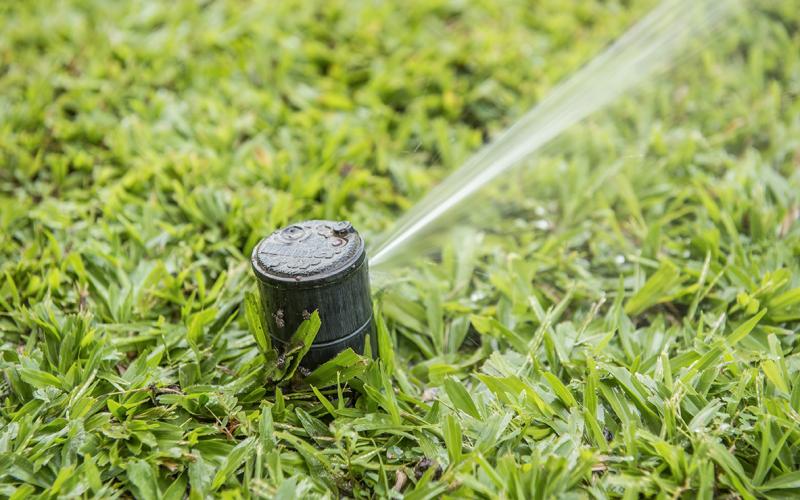10 easy ways to save water
Making small adjustments to the way we use water can make a big difference.
The 2 biggest water wasters are:
Irrigation - click here to find out more.
Leaks - click here to find out more.
Here is a list of 10 easy ways to save water that will help reduce your bills without being a burden on your day.
1. Drinking water
No one loves that first splash of warm tap water. Instead of tipping it out, catch it in a jug and pop it in the fridge.
No fridge space? Your plants, fruits and vegetables and dishes won’t notice if you’re using warm water on them.
2. Cooking
Lid on = veggies cook faster, use less water, save energy, and keep more nutrients.
Use just enough water so your veggies are bathing, not swimming. Defrosting food in the fridge overnight instead of under running water.
3. Shower vs bath
Showers use less water, but your showerhead makes a huge difference.
A 3-star showerhead uses 9 L/min; older styles use up to 20 L/min. Switching could save 20,000 litres of water a year. A 6-minute shower with a modern head saves about 50 litres each time.
- Other ways to save water in the shower
-
- Take shorter showers. Limit time spent in the shower to soap up, wash down, and rinse off. Shorter showers save on energy costs associated with heating water.
- Use a shower timer. Choose from a manual 4-minute egg timer or a more sophisticated electronic timer that either attaches to the shower wall or showerhead, or is wired into the wall during construction.
- Use a bucket to collect tepid water while waiting for the shower to get hot.
- Shave your legs before taking a shower. Use running shower water to rinse off.
- Insulate hot water pipes. This avoids wasting water while waiting for hot water to flow through and saves energy.
- Consider an instantaneous water heater if your existing water heater is located some distance to the bathroom. Talk to a plumber first to make sure it will work adequately with your 3-star showerhead.
- Make sure your hot water system thermostat is not set too high. Adding cold water to reduce the temperature of very hot water is wasteful.
- Saving water in the bath
-
- Only fill the tub with as much water as needed. Use less for children and pets.
- Check the temperature as you fill. Adding extra water to get the correct temperature after the bath is at the right level is wasteful.
- Regularly check your plug for leaks and replace as necessary.
- Bucket used bath water onto the garden or use it to wash your car. Check that soaps and detergents in the water won’t harm garden plants.
4. Toilets
Older toilets use much more water than newer models. Dual flush toilets use half the amount of water than single flush toilets.
To give you some context, older, single flush toilets use around 12 L/flush, whereas modern dual-flush toilets use 3 L/half flush and 4.5 L/full flush.
If you’re not looking to replace your toilet, it’s important to keep an eye on your existing one and check for leaks.
Research shows, on average, a leaking toilet can waste as much as 200,000 litres of water per year. That’s almost the national average household use in a year!
Here’s how to check for toilet leaks:
- Add a few drops of dye into your toilet cisterns
- Leave the toilet for an hour without flushing. If dye appears in the toilet bowl, this may indicate a leak.
5. Dishwashers
Dishwashers use the most water in your kitchen, so choose a National Water Efficiency Labelling and Standards (WELS) rated model (more stars = less water).
Use the rinse-hold option (if your dishwasher has one) and only run the dishwasher when you have a full load.
6. Washing up
Plug in the sink instead of washing under running water. Then stack your dishes on a drying rack and rinse them with a pan of hot water.
Two sinks? Use one for washing and one for rinsing.
Keep dish soap minimal to avoid needing extra rinse water.
7. Fix leaky taps
Dripping taps waste an enormous amounts of water (up to 200L per day).
Top tap tips:
- Replace worn washers and consider adding inexpensive flow aerators which can reduce water flow by 50%.
- Remember to turn off the tap when brushing your teeth
8. Hot water systems
Is your water coming out the tap scalding hot? Make sure your hot water system thermostat isn’t set too high.
On the other hand, if water is coming out stone cold, insulate your hot water pipes. This avoids wasting water while waiting for the hot to flow through. Plus, it’ll save energy. Double the savings.
9. Garbage disposal units
Garbage disposal units use about 6 litres of water per day. Put suitable food scraps into a composter or worm farm rather than down the kitchen sink.
10. Fish tanks
When you clean your fish tank, you can make use of that water rather than pouring it down the drain. Use the water on your plants and watch your garden flourish.

